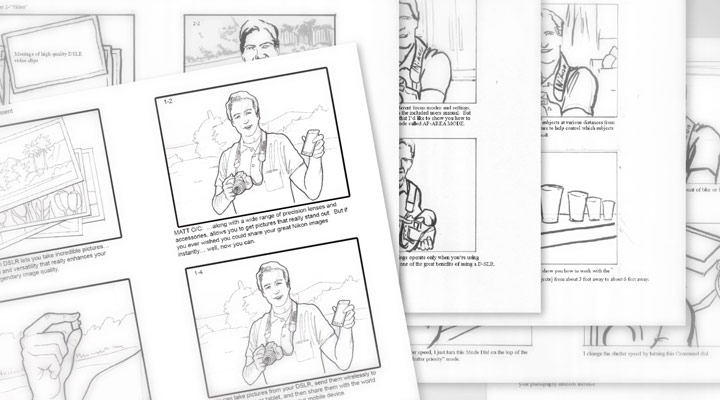Moviemaking 101 – 6 Tips On How To Make A Video
HD-SLR Video Tips: Moviemaking 101 - Learn the basics needed when shooting videos with your Nikon HDSLR camera. (2:00 min.)
Follow these six tips for a better movie making experience with your Nikon HDSLR:
-
Pre-production planning. A Hollywood movie never begins shooting without all aspects of the film being planned out in the pre-production stage. Take a tip from the pros and plan out the story you want to tell using video. It can be as simple as writing out a shot list (a list of shots you want to capture); a simple outline; the dialog you wish to capture; or it can be more formal, with a script and storyboard (illustrating your movie shot by shot). This way you can keep track of what you’ve shot and what is remaining. This lets you make sure that you don’t forget to capture any important footage when you make your video.
-
Capture a variety of shots. Telling a story will be more interesting if you’re capturing a variety of shots. The best videos are made of short clips edited together. In the film world the wide angle shot is known as the Establishing Shot and it shows the overall scene. Medium shots often include one or more subjects. Close-up shots can be cropped at the head and shoulders like a portrait, or an extreme close-up of only a part of a person or subject.
-
Break up the monotony by moving the camera’s position. Just like its good to vary the composition of your movie with wide, medium and close-up shots, its also good to move the camera’s position if possible. Don’t shoot everything at eye-level from a standing position. Look for creative angles, low to the ground or from a high vantage point. These will make your movie more interesting for your viewers.
-
Pad your shots. This means shooting a little extra footage before your action begins and letting the camera record a little bit extra after the action ends. Doing so will make it easier for you to edit your movie together, because you’ve got extra frames to edit around.
-
Limit your camera motion. Too many zooms (in and out) or pans (from side to side) can be distracting to the viewer; ruining an otherwise good story. Less is more in this case.
-
Shoot lots of stills. Still images can be incorporated into your movie as part of multimedia storytelling.
Remember to check your HDSLR camera’s User’s Manual for instructions on its particular menu navigation and dial layout.






